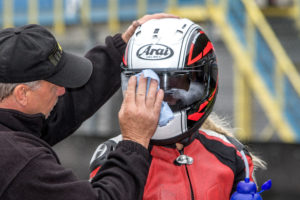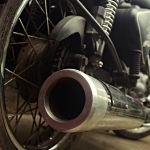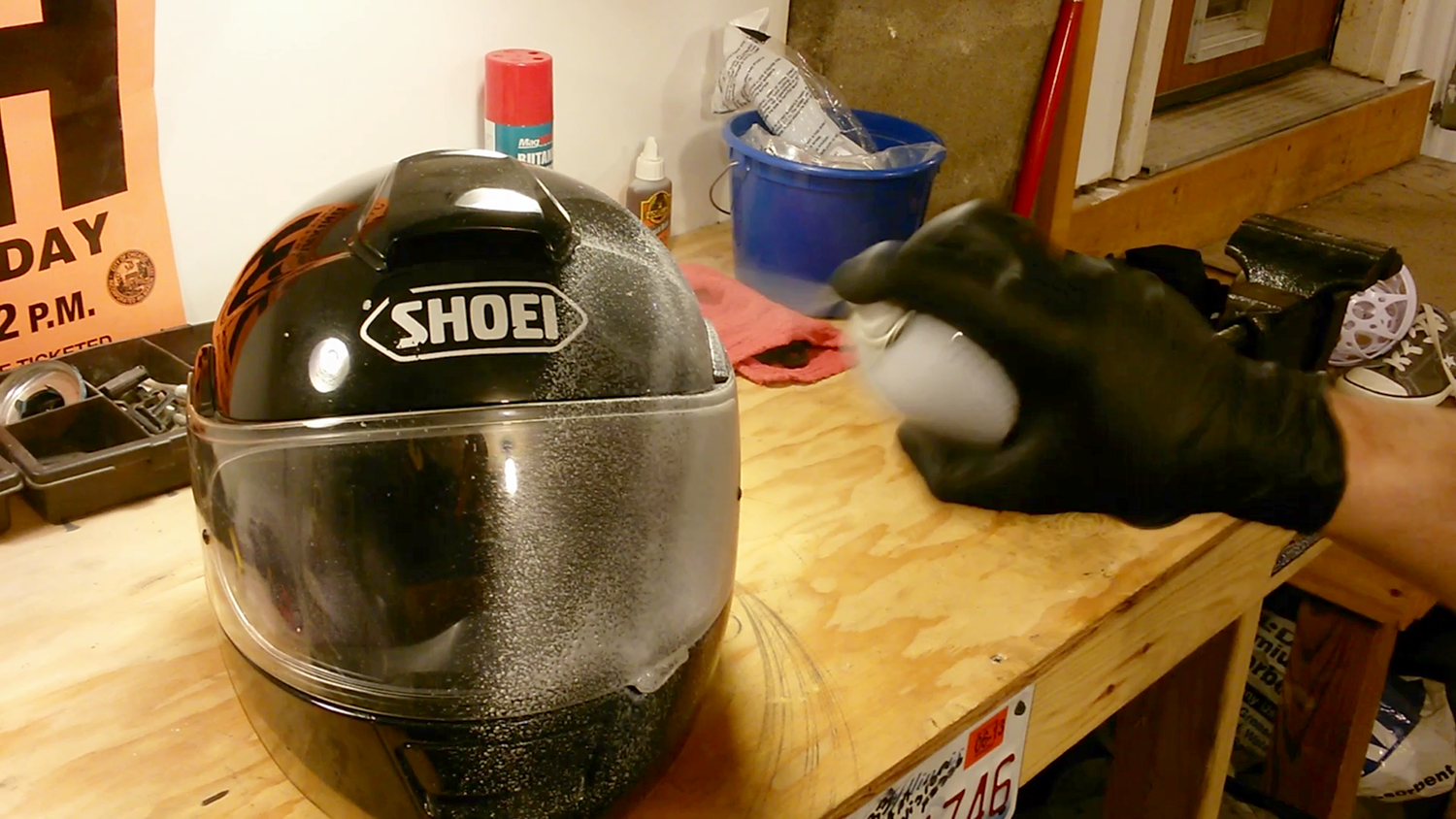A clean helmet not only looks good but can also make your ride much more enjoyable. I think we can all agree that putting on a brand new helmet that doesn’t smell like road kill is one of the most satisfying things a rider can do. Unfortunately, a brand new helmet for every single ride is highly unlikely to happen. Lucky for you though, we have pulled together some of the best strategies to make your sweaty helmet feel brand new again.
Let’s start off with the shell.
Cleaning the shell of your helmet may seem like it’s purely for show, and yes, that is a big part of it! However, having a clean shell can also help further the overall longevity of your helmet. Why is that you may ask? When mud is on your helmet and then dries, It can quickly become a paint chip nightmare if the mud isn’t removed using the proper steps. Thus causing the aesthetic value of your helmet to drastically decrease. You can prevent this by spraying your helmet with a small amount of WD-40 or other silicone sprays (which makes it harder for the mud to stick in the first place). Damn – you didn’t do that, did you? Here’s how you get that caked on mud off without damaging your lid!
Start off by dampening a rag and laying it on top of your helmet for 15 minutes or until the mud is completely wet again. This will loosen any stuck on dirt, guaranteeing that your paint will not be damaged in the process. After this, take a soaked ragged and begin to wipe off the mud. Now – take your clean rag and polish until you’re content with how it looks. Finally, spray a thin layer of your non-stick lubricant to make the job much easier for the next time around. I strongly advise that you use this method and avoid pressure washers and/or submersing your helmet completely. When the protective liners are soaked, they can be damaged resulting in a faulty helmet.

Now your shell is clean, your vents will be next.
With the amount of dust that can be pulled through your vents, it is easy for them, to clog up. There is nothing worse than having your head stuck in the helmet when the heat has nowhere to escape because the exhaust vents are blocked. To avoid this, there are several methods you can use. Firstly, you must see if the vents on your helmet are removable. If so, remove them – along with your mouthpiece. You can then use a pressure washer to clean them thoroughly. If you can’t take them off or don’t have a pressure washer, we strongly recommend using your toothbrush! Gently brush any dirt or mud out of the vents allowing the passages let air flow through them once again. Although we don’t condone it; if you decided to use it for your teeth afterward make sure the brush is well cleaned off, but that’s entirely up to you. As for your mouthpiece, you may find that there is a removable filter embedded inside. If this is the case, wash it thoroughly or pick up a replacement. Having clean filter to limit the dust you’re breathing is beneficial to both your health and performance on the track.
Your helmet is pretty much done! We just have the last, and most important step to cover. The pads.
We all know that the pads in your helmet can become one of the most disgusting, horrible smelling things on this planet. Putting on a lid with damp, sweaty pads is overall an unpleasant experience to say the least and can really put a damper on your day of riding. Luckily, there are some awesome methods on cleaning your pads up and making your helmet smell and feel like it should again! The best and most affordable method is to use dish soap. As you may know, dish soap is designed to fight the grease that is on dishes, but it also works great to remove the grease from your skin that has built up in your cheek pads. To do this, fill up a sink with warm, soapy water. Submerse the pads while scrubbing and squeezing them to ensure that the water has completely circulated throughout the pads. If you notice that the water is getting very dirty, drain the water and repeat until the water remains clean. Hang them to dry, then clip them back in! Simple as that! Something to take into consideration is that you can buy solutions specifically designed to clean pads, but dish soap will do the trick just fine.
There you have it! Your helmet went from gross to great in no time at all. Before we sign off though, you may like to consider a sweat cap to go underneath your helmet. Not only do these prevent sweat from going into your eyes, they also keep your pads clean for much longer.


![Motorcycle music system [Tested on Royal Enfield]](https://350cc.com/wp-content/uploads/2017/09/Motorcycle-Bluetooth-music-system-Tested-on-Royal-Enfield-150x150.jpg)


